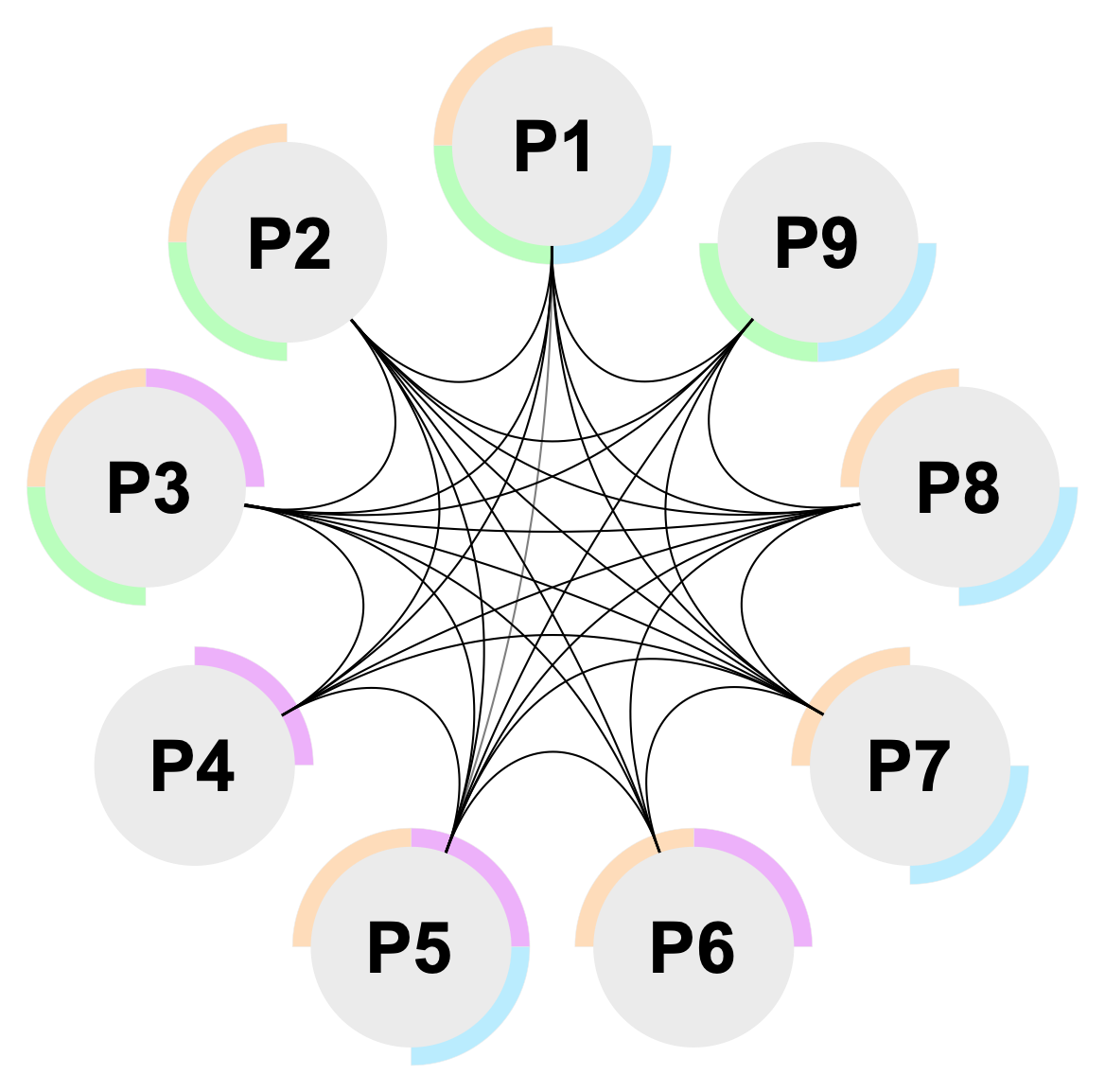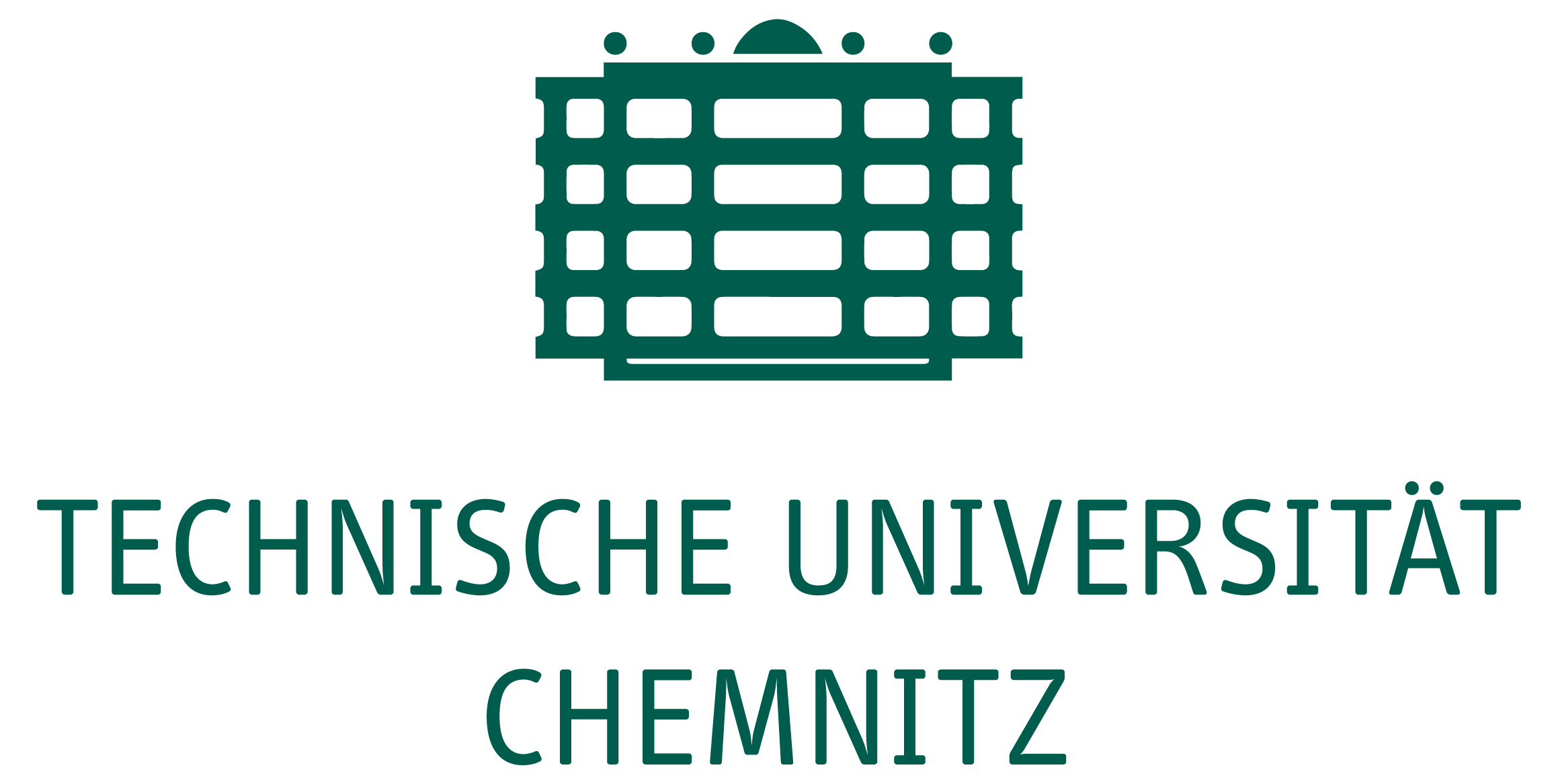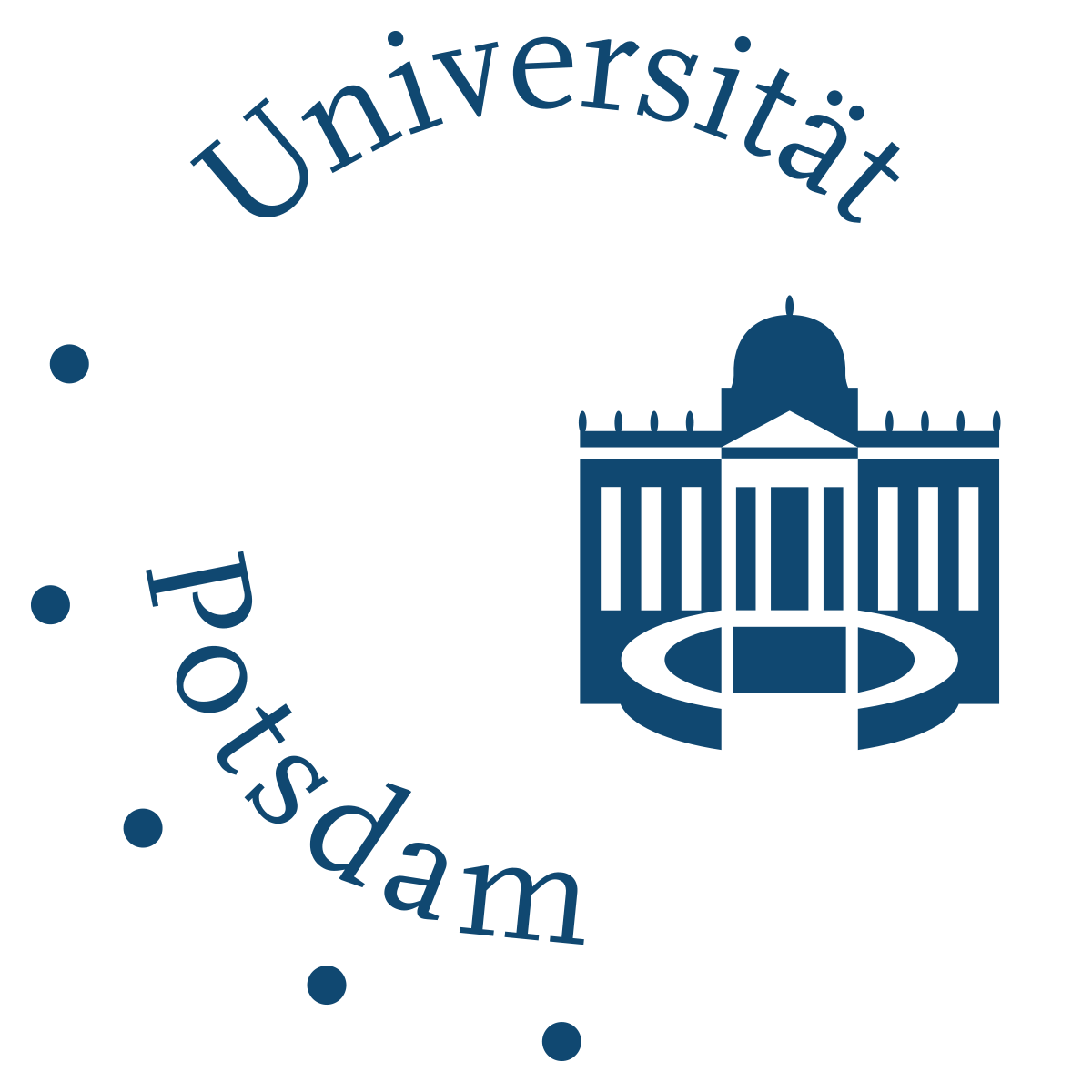
Prof. Dr. Michael Sommer
TU Chemnitz
The goal of Project 1 within FOR 5387 POPULAR is to control and predict morphology of non-fullerene (NFA) solar cells and increase their morphological long-term stability. Using donor–acceptor multiblock co-oligomers with monodisperse blocks, we will generate thermodynamically stable, lamellar morphologies by virtue of self-assembly. Lamellar widths and long periods will be predicted and determined by the length of the donor and acceptor segments. Chemically, the oligomeric donor segments will be based on the repeat Universityts of the state-of-the-art material PM6, while the acceptor segment will be based on established PNDIT2. As a key feature, monodisperse oligomers with well-defined end groups will be prepared and incorporated into multiblock co-oligomers. Unlike literature reports on conjugated donor–acceptor block copolymers, the monodisperse nature of the blocks will allow for extremely well-defined interfaces. Moreover, issues related to reproducibility and batch-to-batch variations can be entirely eliminated. Furthermore, usage of non-conjugated linkers between donor and acceptor segments will give room to enhanced segregation of the two segments and additionally prevent charge recombination. In the second four-year period, this approach will be extended to further non-fullerene acceptors with PNDIT2 being substituted by yet higher performing acceptors such as Y6. The hitherto unknown multiblock cooligomers will be investigated comprehensively by the POPULAR consortium using molecular, opto-electronic, thermal, structural and device-related methods, and their suitability for printed solar cells will finally be elucidated.
Prof. Dr. Arved Hübler
TU Chemnitz
The two main tasks to be solved in the P2 project are (I) the fabrication of solar cells by means printing processes and (II) the investigation of the
mechanisms involved in the formation of layers, with particular emphasis on durability aspects.
Printing is carried out using the standard processes of gravure printing, flexographic printing, screen printing and inkjet printing. In an iterative test procedure, proof
prints are first produced and evaluated with regard to layer formation, and then characterized and further analyzed in particular by the partner projects. In a second stage,
promising systems are produced in roll-to-roll printing (R2R) and characterized accordingly. PEN/PET films are used as substrate, for the active layer the materials PM6, PTB7-Th,
PffBT4T-2OD as well as ITIC, Y6, Y7, but also block co-oligomers are initially in the foreground. The electrodes as well as the charge transfer layers will be designed with adapted
standard materials. In parallel to the regular multilayer printing, a new approach is being developed in which the layers are printed on two film sheets and then laminated
together in the active layer. This approach promises the possibility to specifically influence the morphology of the active layer in the lamination process. Macroscopic
examination, including in situ, is planned to study the layer formation in the printing process and the printing results. Further analyses of the morphology and function
of the printed solar cells will be carried out by the partner projects and taken into account in a close iterative process during the development of the printing processes.
In addition to the fluid mechanics during ink transfer and the drying process, special attention will be given to the ink formulation. The project is also closely linked to
the development of the block co-oligomers. The ink formulation and the sample preparation in the various printing processes also serve in particular to elucidate the
intrinsic mechanisms that lead to a reduction in the lifespan and to a degradation of the solar cells.
Prof. Dr. Carsten Deibel & Prof. Dr. Roderick C. I. MacKenzie (Mercator fellow)
TU Chemnitz / University Durham
The dual aims of this project are to a) understand loss mechanisms in all-printed organic solar cells based on non-fullerene acceptors (NFAs), and b) to
use this understanding to predict the final performance of printed large area NFA-based devices.
We will focus on how the nanomorphology (nm scale) and microstructure (micron scale) of printed organic layers affect recombination yield and transport losses, and how it
ultimately impacts the performance of printed solar photovoltaic devices. Both physical experiments and numerical simulation will be used to underpin this work. A hyperspectral
approach will be developed, to map the absolute photon emission spectra from charge transfer complexes upon optical excitation, in order to predict the open circuit voltage of
printed active layers before the deposition of electrodes. The interpretation will be supported by a microscopic 2D network model, corresponding to the solar cell surface,
where each node consists of a complete drift–diffusion simulation to describe the local device physics. We will also study the impact of the nanomorphology – measured and
modelled within the consortium – on the device physics by a combination of experiments and 3D drift–diffusion simulations. For a deeper understanding, we will account for
the detailed recombination losses by measuring charge carrier concentration and lifetime in the frequency domain. We will evaluate the experimental data by global fitting
using the drift–diffusion model with machine learning to understand the bottlenecks limiting overall device and material performance. This approach will enable us to gain a
detailed understanding of both the device physics on different length scales, and how these physical processes ultimately affect the device characteristics of large area
printed solar cells. In combination with the other projects within the POPULAR consortium, we will be able to unravel the function–property relations of printed NFA-based
organic solar cells.
Prof. Dr. Safa Shoaee & Prof. Dr. Dieter Neher
University Potsdam
Compared to inorganic materials, organic semiconductors have a larger positional and energetic disorder. In bulk heterojunction solar cells, this is primarily a result of molecular and interfacial interactions and the multiple possible morphologies upon mixing of the donor and acceptor. Fullerene-based blends have large energetic disorder with values that can even exceed 100 meV. This is because of the small aggregate size of substituted fullerenes such as PCBM and the significant orientational disorder even within these ordered regions. Modern NFAs as used in state-of-the-art organic solar cells form domains with well-defined intermolecular order, accompanied by low energetic disorder. However, these conclusions were generally reached for ca.~100~nm thick active layers spin-coated from halogenated solvents, which give the highest efficiencies. The situation may change when printing thicker active layers from non-chlorinated solvents. In this proposal, we will link energetic disorder to the photovoltaic parameters by providing a detailed analysis of printed devices formed from benign solvents. Thicker active layers printed from non-halogenated solvents are anticipated to have different miscibility, interfacial interaction and blend morphology, and thereby different energetic disorder. Question of interest is how does device performance correlate with differences of the specific properties of spin coated and printed layers? To this end we will employ transient absorption, time-delayed collection field and photocurrent-photoinduced absorption to study charge generation and recombination as a function of field and temperature. Space limited charge current measurements will be used to quantify energetic disorder and mobility of printed devices. The results will used for detailed device simulations together with groups of the consortium. Our investigations will start with selected material combinations for which high efficiencies are already reported on spin-coated devices and continue with single component active layers to be developed in course of this Research Unit, which will also form the focus of the second funding period.
Prof. Dr. Eva M. Herzig
University Bayreuth
This project is part of the collaborative research effort POPULAR with the goal to enable reliable high performance, large scale, organic photovoltaic processing by understanding the fundamental photophysical and nanostructural processes involved in industrially fabricated devices. In our subproject we want to contribute to this overall goal by revealing the possibilities and limitations we have in deliberately choosing a particular nanostructure and -morphology (ns&m) by carefully controlling the deposition process and systematically exploring postprocessing. Results from blade coating are well transferable to gravure printing. Additionally, many decisive processing parameters can be easily varied in a large parameter space. Hence, we carry out our systematic studies via blade coating with various processing parameters like solvents, composition, temperature, additives, film thickness etc. We will then use postprocessing to further manipulate the ns&m. Recording time-resolved spectroscopic data of the structure formation process during blade coating gives us access to processing signatures that contain information on aggregation and phase separation behavior as a function of processing. Relevant final films are structurally characterized using x-ray scattering. From the easily accessible processing signatures, in combination with detailed structural studies we can fundamentally understand the experimentally decisive structure formation mechanisms. We aim to gain enough fundamental understanding to be able to suggest processing parameters for new materials solely by recording processing signatures. Furthermore, we will examine the effect of microstructural inhomogeneities on the mm-scale on the underlying ns&m and use the previously gained understanding to counteract detrimental structure formation effects. In combination with the other projects we will be able to contribute to a holistic understanding of structure—function relationships in printed organic photovoltaics.
Prof. Dr. Jan-Frederik Pietschmann & Prof. Dr. Martin Stoll & Prof. Dr. Roland Herzog
University Augsburg / TU Chemnitz / University Heidelberg
This project aims at a) the derivation of accurate mathematical models for the morphology formation during organic solar cell production,
both via spin coating and printing processes, b) to develop efficient numerical schemes that allow for the fast and accurate numerical simulation of these
models in two and three spatial dimensions, and c) the use of parameter identification techniques to calibrate the models using experimental data obtained
by other projects within FOR 5387.
The modelling methodology will be based on phase field descriptions of binary polymer-NFA systems whose dynamics is governed by a free energy functional
based on the Flory-Huggins theory. Evaporation of the solvent will be taken into account by introducing an additional order parameter, allowing for a flexible
treatment of geometric effects but also a natural coupling to hydrodynamics. In addition, appropriate mobilities will take care of size exclusion effects that
occur when most of the solvent is evaporated.
The efficient numerical schemes we will develop in this proposal are essential for evaluating the complex phase-field models. In order to achieve the desirable
accuracy, the discretization needs to be sufficiently fine-grained requiring the solution of many large-scale (non)linear systems of equations. The efficiency
will rely on developing suitable iterative solution schemes requiring structured preconditioners.
Relying on these algorithms, parameter identification is carried out by numerically solving appropriate non-linear least squares problems. As the specific morphology
is very sensitive to the initial conditions and the choice of parameters, yet the efficiency of the resulting organic solar cells mostly depends on averaged quantities,
it is most important to develop appropriate loss functionals for the purpose of parameter identification. In addition, a sensitivity analysis will be carried out to
identify the most important parameters in terms of these quantities of interest.
Prof. Dr. DRT Zahn
TU Chemnitz
In this project we apply photoemission spectroscopy (PES) and inverse photoemission spectroscopy (IPES) as well as spectroscopic ellipsometry (SE)
for the determination of electronic and optical properties, respectively, of neat non-fullerene acceptor (NFA), donor, and multiblock co-oligomers layers and donor-acceptor
blends as-prepared and as a function of various ageing processes. PES and IPES deliver information on the density of occupied states (DOS) and the density of unoccupied
states (DOUS), from which valuable parameters such as the work function (WF), the ionization energy (IE), the electron affinity (EA), and thus the transport or single
particle bandgap can be derived. Ellipsometry spectra, on the other hand, are defined by the joint density of states (jDOS) and provide the dielectric function respectively
the optical constants, from which the optical bandgap can be derived. Moreover, SE can be employed to determine thin film thicknesses, composition and compositional gradients,
optical anisotropies induced by molecular orientation, surface and interface roughnesses, as well as horizontal and vertical inhomogeneities.
There are three research foci in this project, namely the investigations of a) neat NFA, donor, and multiblock co-oligomers layers, b) donor-acceptor blends, and c) the influence
of degradation/ageing processes on the electronic and optical spectra. Regarding neat layers we study some available NFAs, donors, and the novel NFA-containing multiblock
co-oligomers synthesized within the Research Unit. The parameters obtained (WF, IE, EA, transport bandgap, optical bandgap with the difference of transport and optical
bandgaps providing an estimate of the exciton binding energy) serve as reference data and as input for the device modelling within the Research Unit. In this part of the
project, the layers are predominantly prepared by spin coating, but comparison with printed layers provides, for instance, information on production-related differences
in molecular orientation.
The second focus lies on donor-acceptor blends and PES/IPES in combination with SE deliver, on one hand, the same valuable parameters as for neat layers. However, the role of
SE becomes more important as it can be employed to investigate the morphology by using effective medium approximation (EMA) approaches to model the optical response.
EMA can deliver information on how donors and acceptors are intermixed and possible phase separation should be detectable. However, EMA has some limitations, for instance
when the size of phase separated domains is on the order of the wavelength of light used in SE. Moreover, new electronic states induced by the interaction of donors and
acceptors in the blend, such as charge transfer (CT) states, are not taken into account by EMA. Therefore, we plan to go beyond the common EMA approaches and to detect
interaction-induced effects in the ellipsometric spectra. We compare spin-coated blends with printed blends taking into account the processing parameters such as the
solvent used. SE is also employed to investigate inhomogeneities of blended layers both lateral and in depth. In-depth inhomogeneities can be resolved by including graded
layers in the modelling of ellipsometric spectra. Lateral inhomogeneities can be probed by mapping SE with a lateral resolution of about 100 µm and by imaging ellipsometry
with a resolution of 1 µm.
Finally we focus on degradation/ageing processes of blended layers. In this respect, PES and IPES being ultra-high vacuum-based techniques are somewhat limited and we can
only compare pristine samples with degraded ones after exposure to a degradation process ex situ. SE, on the other hand, enables online monitoring of degradation processes
using a specialized setup with a spectroscopic ellipsometer attached to a glove box, in which the samples can be exposed to e.g. light, heat, and gases. Samples to be
investigated include spin coated blends but focus on printed photovoltaic layers. This last research focus also paths the way to exploring the future application of SE as an
online monitoring respectively real-time process-control technique applied during the printing processes.
Prof. Dr. Yana Vaynzof
TU Dresden
Printed organic photovoltaics offer the possibility to produce inexpensive, large area and flexible products, yet certain challenges still need to be addressed
prior to its integration in industrial applications. One of these challenges is related to the difficulty of forming uniform, homogeneous films over large areas. The presence of
inhomogeneities will affect the function and performance of the printed devices as well as its stability.
In this project, we will investigate the formation of compositional and electronic inhomogeneities in printed organic solar cells by spatially and energetically resolved
photoemission spectroscopy (PES). Spatially resolved information across large areas can be obtained by using PES imaging or PES mapping, offering a resolution of 1 and 100 micron,
respectively. These length scales are highly relevant to the study of inhomogeneities and make it possible to characterise large samples (on a cm length scale). Vertically resolved
measurements with a resolution of 1–2 nm are made possible by coupling the spectroscopic characterisation with gentle etching by a gas cluster ion beam, which offers an essentially
damage-free etching of organic materials. The two methods can be combined in order to track the evolution of the composition and electronic structure of materials across large
areas at various depths of the device active layer.
These methods will enable us to characterise both the compositional and electronic inhomogeneities as a function of lateral dimensions and depth. Together with other partners of
the Research Unit POPULAR we will reveal how these inhomogeneities impact on the device performance, and in particular on the stability. The latter will be examined in detail in
this project in order to elucidate how the presence of inhomogeneities formed during fabrication can lead to degradation, and alternatively, how the ageing of homogeneous printed
layers can lead to the formation of inhomogeneities.
Prof. Dr. Christoph J. Brabec & Prof. Dr. Ning Li
University Erlangen-Nürnberg
Transition from fullerene based to non-fullerene-based acceptors (NFAs) has eliminated two major degradation processes in organic solar cells (OSCs): fullerene
dimerization and fullerene diffusion. First experiments evidenced unprecedented device lifetime for selected NFA composites. P3HT: IDTBR solar cells were recently operated by
our groups for over 25000 hrs continuously without obvious signs of degradation under 1 sun equivalent LED illumination and at temperatures below 40°C. However, higher temperatures
as well as UV / blue light are known to induce distinct degradation mechanisms in OSCs. Our recent investigations provided first insight into the mechanisms behind these degradation
processes. We found a distinctly expressed wavelength dependence for photodegradation, which reached far into the 500 nm regime. Moreover, we found that controlling the
dimensionality and density of charge generating interfaces is a key parameter to enhanced thermal stability.
Controlling the donor / NFA microstructure is of central importance to P9. Bulk heterojunction (BHJ) composites, bilayer (BL) as well as pseudo bilayer (PBL) solar cells will
be made by conventional printing techniques, by layer transfer or by orthogonal solvent processing. This approach aims to control the active layer microstructure, giving us the
ability to tune the device from a pure bilayer, through to an inter-diffused bilayer device and finally to an optimised bulk heterojunction in a controlled way. Thermal degradation
as well as spectrally resolved photo induced degradation will be separately studied for these reference architectures and compared to the classical bulk heterojunction concept.
Degradation of partially finished solar cell stacks will allow to investigate interactions between neighbouring layers and help identify the leading degradation mechanisms.
Machine Learning Techniques will correlate the data from various characterisation techniques as absorption, transient PL and electrical measurements to provide a predictive
framework for organic photovoltaic (OPV) stability investigations. Based on the knowledge gained in this project, several strategies will be employed to mitigate thermal as
well as photo-chemical degradation and to fabricate highly stable lab scale devices.







